Kia Niro VS VW ID.7 Touring – Specs, Efficiency & Price Comparison
Which model is the better choice – the Kia Niro or the VW ID.7 Touring? We compare performance (171 HP vs 340 HP), boot capacity (451 L vs 605 L), efficiency (0.80 L vs 14 kWh), and of course, the price (28100 £ vs 47000 £).
Find out now which car fits your needs better!
The Kia Niro (SUV) is powered by a Full Hybrid or Plugin Hybrid engine and comes with a Automatic transmission. In comparison, the VW ID.7 Touring (Estate) features a Electric engine and a Automatic gearbox.
When it comes to boot capacity, the Kia Niro offers 451 L, while the VW ID.7 Touring provides 605 L – depending on what matters most to you. If you’re looking for more power, you’ll need to decide whether the 171 HP of the Kia Niro or the 340 HP of the VW ID.7 Touring suits your needs better.
There are also differences in efficiency: 0.80 L vs 14 kWh. In terms of price, the Kia Niro starts at 28100 £, while the VW ID.7 Touring is available from 47000 £.
Compare all the key specs now and find out which model fits your lifestyle best!
Kia Niro
The Kia Niro presents itself as a versatile and eco-friendly SUV, blending a stylish design with advanced hybrid technology. Its spacious interior offers comfort and practicality, making it ideal for both city driving and longer journeys. With a focus on efficiency and sustainability, the Niro is a compelling choice for environmentally conscious drivers.
details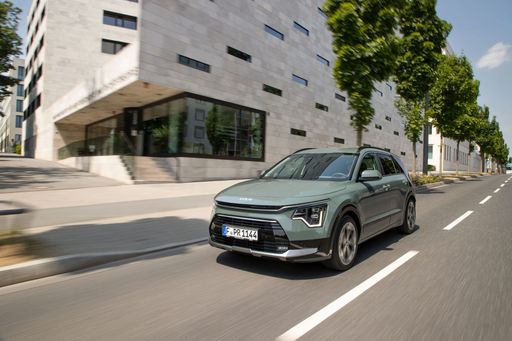 @ press.kia.com
@ press.kia.com
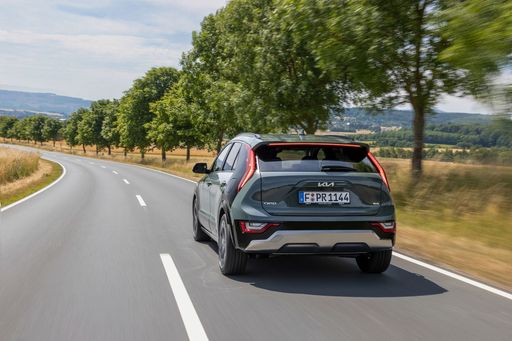 @ press.kia.com
@ press.kia.com
 @ press.kia.com
@ press.kia.com
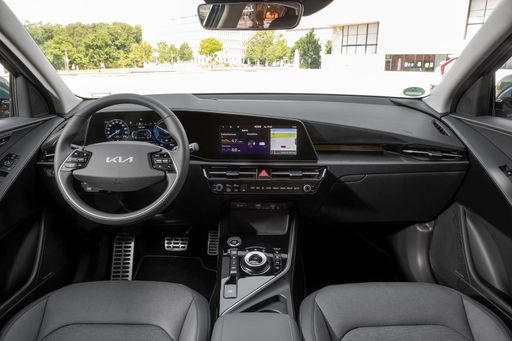 @ press.kia.com
@ press.kia.com
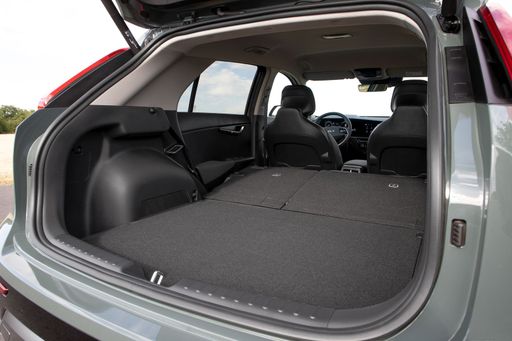 @ press.kia.com
@ press.kia.com
VW ID.7 Touring
The VW ID.7 Touring represents a new chapter in Volkswagen's electric vehicle lineup, offering a seamless blend of style and sustainability. This estate car is designed to provide ample space and comfort for both passengers and luggage, making it ideal for long journeys. With advanced technology features and a focus on eco-friendly performance, the ID.7 Touring is set to appeal to environmentally conscious drivers who don’t want to compromise on practicality or luxury.
details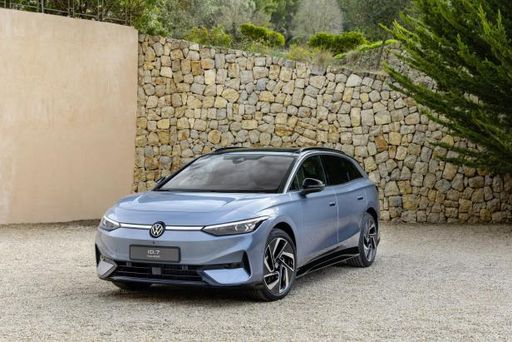 @ Volkswagen
@ Volkswagen
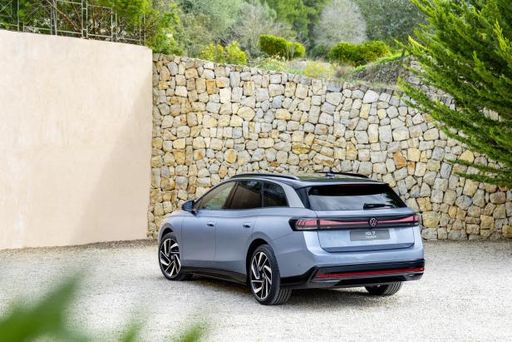 @ Volkswagen
@ Volkswagen
 @ Volkswagen
@ Volkswagen

|
 @ Volkswagen
@ Volkswagen
|
|
|
|
Costs and Consumption |
|
|---|---|
|
Price
28100 - 37800 £
|
Price
47000 - 54900 £
|
|
Consumption L/100km
0.8 - 4.4 L
|
Consumption L/100km
-
|
|
Consumption kWh/100km
-
|
Consumption kWh/100km
14 - 16.6 kWh
|
|
Electric Range
59 - 65 km
|
Electric Range
584 - 690 km
|
|
Battery Capacity
1.3 - 11.1 kWh
|
Battery Capacity
77 - 86 kWh
|
|
co2
19 - 100 g/km
|
co2
0 g/km
|
|
Fuel tank capacity
37 - 42 L
|
Fuel tank capacity
-
|
Dimensions and Body |
|
|---|---|
|
Body Type
SUV
|
Body Type
Estate
|
|
Seats
5
|
Seats
5
|
|
Doors
5
|
Doors
5
|
|
Curb weight
1474 - 1594 kg
|
Curb weight
2195 - 2339 kg
|
|
Trunk capacity
348 - 451 L
|
Trunk capacity
605 L
|
|
Length
4420 mm
|
Length
4961 mm
|
|
Width
1825 mm
|
Width
1862 mm
|
|
Height
1545 mm
|
Height
1549 - 1551 mm
|
|
Payload
466 kg
|
Payload
455 - 461 kg
|
Engine and Performance |
|
|---|---|
|
Engine Type
Full Hybrid, Plugin Hybrid
|
Engine Type
Electric
|
|
Transmission
Automatic
|
Transmission
Automatic
|
|
Transmission Detail
Dual-Clutch Automatic
|
Transmission Detail
Reduction Gearbox
|
|
Drive Type
Front-Wheel Drive
|
Drive Type
Rear-Wheel Drive, All-Wheel Drive
|
|
Power HP
129 - 171 HP
|
Power HP
286 - 340 HP
|
|
Acceleration 0-100km/h
10.4 - 11.3 s
|
Acceleration 0-100km/h
5.5 - 6.7 s
|
|
Max Speed
160 - 161 km/h
|
Max Speed
180 km/h
|
|
Torque
265 Nm
|
Torque
545 - 679 Nm
|
|
Number of Cylinders
4
|
Number of Cylinders
-
|
|
Power kW
95 - 126 kW
|
Power kW
210 - 250 kW
|
|
Engine capacity
1580 cm3
|
Engine capacity
-
|
General |
|
|---|---|
|
Model Year
2024
|
Model Year
2024
|
|
CO2 Efficiency Class
C, B
|
CO2 Efficiency Class
A
|
|
Brand
Kia
|
Brand
VW
|
Kia Niro
The Evolution of the Kia Niro: A Glimpse into the Future
The Kia Niro has become a symbol of innovation in the hybrid and electric vehicle market. This compact SUV offers a unique blend of efficiency, performance, and style, appealing to a wide range of drivers. Kia Niro's latest model lineup showcases different powertrains, offering consumers choices between full hybrid, plug-in hybrid, and full electric options. These advancements represent Kia's commitment to sustainable mobility and cutting-edge technology.
Performance and Efficiency: Behind the Wheel of the Kia Niro
The performance range of the Kia Niro is impressive, with power outputs ranging from 129 PS in the full hybrid variant to 204 PS in the completely electric version. This ensures that there’s a Niro to meet diverse driving needs and preferences. The acceleration from 0-100 km/h spans between 7.8 to 11.3 seconds across different models, showcasing a balance between efficiency and responsiveness.
Fuel and energy consumption figures are equally commendable. With the hybrid models consuming between 0.8 to 4.4 litres per 100 km and the electric model utilising 16.2 kWh per 100 km, the Kia Niro caters to eco-conscious consumers. Notably, the plug-in hybrid version offers a remarkable electric range of up to 65 km, while the fully electric model boasts an impressive range of 460 km on a single charge.
Innovative Features for Today’s Driver
Kia has equipped the Niro with state-of-the-art features aimed at enhancing the driving experience. The latest models come with advanced driver assistance systems, ensuring safety and convenience. These include lane-keeping assist, adaptive cruise control, and collision avoidance technologies that set a high standard in the compact SUV class.
The Niro also benefits from a sleek infotainment system featuring a high-resolution display, offering seamless connectivity with features like Apple CarPlay and Android Auto. This keeps drivers connected while minimising distractions, creating an optimal driving environment.
Design and Practicality: A Perfect Balance
The Kia Niro stands out with its aerodynamic design, which is both aesthetically pleasing and practical. The dimensions of the vehicle – 4420 mm in length, 1825 mm in width, and a height ranging from 1545 to 1570 mm – provide ample space for passengers and cargo. The boot capacity ranges from 348 to 475 litres, catering to those who require versatility for their lifestyle or family needs.
The Niro’s cabin is crafted with a focus on comfort and usability, incorporating high-quality materials and an intelligent layout that complements its sophisticated exterior.
Sustainability and Cost Efficiency
The Kia Niro reflects Kia's dedication to improving environmental performance. The CO2 emissions spectrum, ranging from 0 to 100 g/km depending on the powertrain, highlights the vehicle's eco-friendly credentials. For those particularly conscious of their environmental footprint, the electric and plug-in hybrid models offer substantial reductions in emissions.
In terms of cost, the Niro offers competitive pricing from €32,790 to €47,590, and operational costs ranging from €928 to €1,101 per month. The Niro also maintains a reasonable cost per kilometre, between 37.1 to 44.1 cents, making it an economically sound choice in the long run.
Conclusion: The Future is Bright for Kia Niro
The Kia Niro stands as a testament to Kia’s innovative spirit and commitment to providing eco-friendly and technologically advanced vehicles. Its blend of performance, efficiency, and innovative features make it a compelling option for those seeking a future-focused SUV. As Kia continues to evolve, the Niro remains a leading example of how the brand is shaping the future of driving.
VW ID.7 Touring
Introducing the Volkswagen ID.7 Touring: The Future of Electric Estate Cars
The Volkswagen ID.7 Touring signifies a new chapter in VW's electric vehicle evolution, with a focus on combining sophisticated design and cutting-edge technology. As an estate variant of the ID series, the ID.7 Touring offers practicality and superior driving performance with a hint of luxury.
Striking Design: A Blend of Practicality and Elegance
The exterior design of the Volkswagen ID.7 Touring is both striking and functional. Measuring 4,961 mm in length, this estate car offers a spacious interior coupled with aerodynamic efficiency. The sleek lines and contemporary silhouette not only enhance its aesthetic appeal but also improve its performance by reducing drag. With a generous boot capacity of 605 litres, it provides ample space for daily use and long-distance travel.
Power and Efficiency: Driving Performance Unleashed
The ID.7 Touring is powered by a selection of electric motors, offering outputs ranging from 286 to 340 PS, catering to varying performance preferences. With a maximum torque of up to 679 Nm, acceleration is smooth and immediate, with the car achieving 0-100 km/h in as little as 5.5 seconds. The efficient electric drivetrain, coupled with a range of up to 690 km, ensures that long journeys are as enjoyable as they are efficient.
Technological Innovation: The Heart of the ID.7 Touring
At the core of the ID.7 Touring's innovative features is its state-of-the-art infotainment system, seamlessly integrated into the cabin. The intuitive interface supports connected services and advanced driver assistance systems, providing a safe and comfortable driving experience. Enhancements in battery technology allow for rapid charging, making the ID.7 Touring a practical choice for those leading busy lifestyles.
Sustainability and Costs: Electric and Economical
With zero CO2 emissions, the ID.7 Touring is a testament to Volkswagen's commitment to sustainability. The electric estate car falls into CO2 Efficiency Class A, offering an economically efficient driving solution. Operating costs are competitive, with an estimated monthly cost ranging from €1,207 to €1,382, and a cost of €0.483 - €0.553 per km, making it an attractive option for the eco-conscious consumer.
The Future of Estates: Volkswagen Leads the Way
Volkswagen's ID.7 Touring brings the electric estate car into the modern age with a perfect fusion of technology, performance, and design. As one of the most anticipated models of 2024, it sets a high bar for competitors in the electric vehicle market. With the ID.7 Touring, Volkswagen continues to lead the charge towards a sustainable automotive future without compromising style or performance.
The prices and data displayed are estimates based on German list prices and may vary by country. This information is not legally binding.
